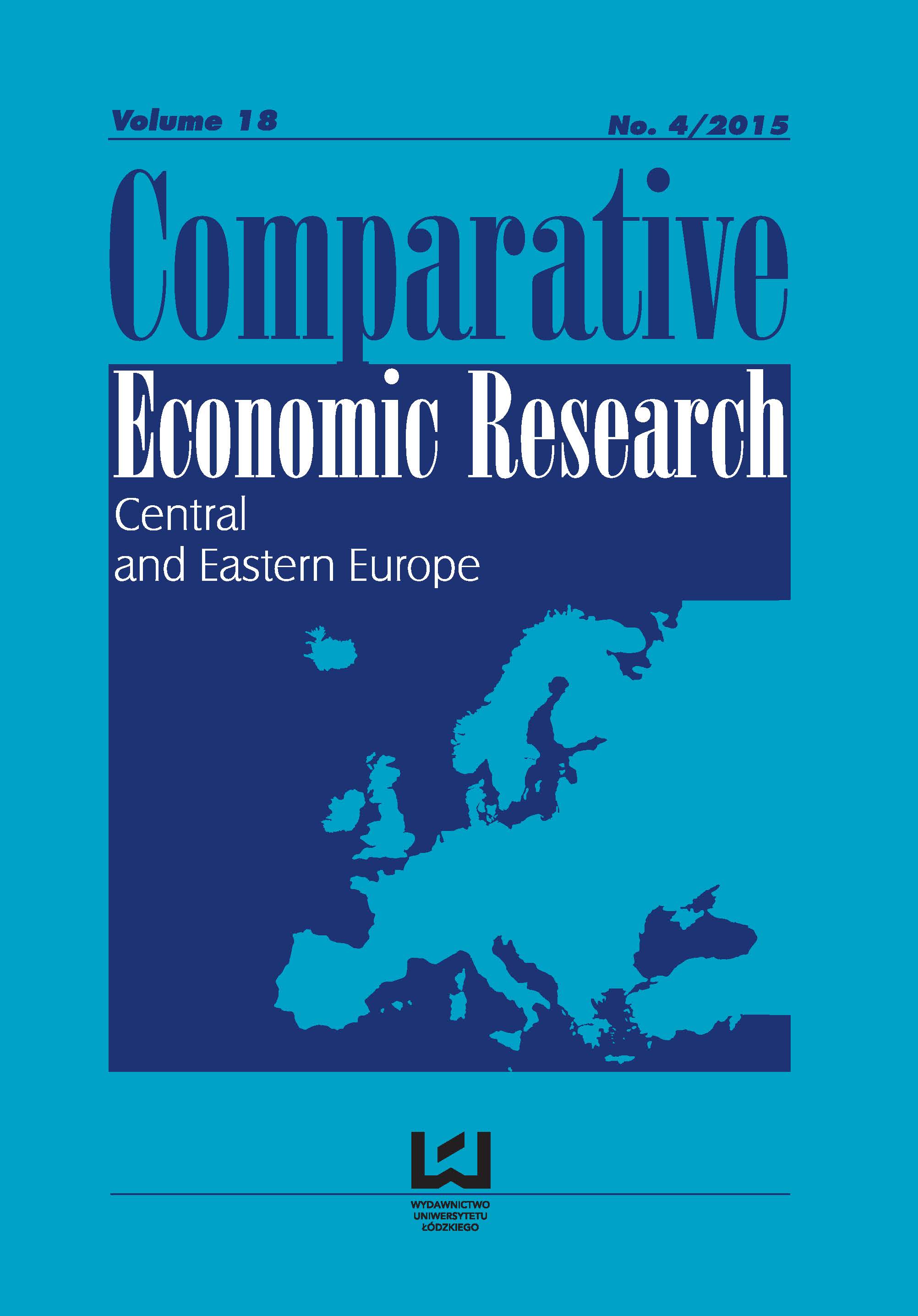Regional Income Inequalities In Poland And Italy
DOI:
https://doi.org/10.1515/cer-2015-0027Keywords:
income inequalit, poverty, inequality decompositionAbstract
Reducing regional inequality was one of the key means of promoting the “harmonious development” within Europe envisioned in the EEC Treaty of 1957. The pursuit of “economic, social and territorial cohesion” through ever closer regional and national harmonisation was also proclaimed in the 2007 Lisbon Treaty, but deepening European integration has not always been matched with convergence in living standards between sub-national regions. The gap between poorer and richer areas increased during the last economic crisis even in some developed economies, and the income discrepancy between richer and poorer regions is likely to widen further as government-spending cuts disproportionately hurt less prosperous regions. Regional inequalities can be measured in many ways - the extent of inequality may be mapped in terms of demography, income and wealth, labour markets, and education and skills. The main objective of this presentation is to analyse regional inequalities in terms of household income distribution. The empirical evidence comes from the GUS, Istat and Bank of Italy databases and has been analysed by means of inequality and poverty indices calculated at NUTS 1 and NUTS 2 levels. In order to work out the intra-regional and inter-regional contributions to the overall inequality, the Gini index decomposition has been applied. While presenting similar levels of income concentration, Poland and Italy turned out to follow different regional inequality patterns.
Downloads
References
Atkinson, A.B. (1996), Income distribution in Europe and the United States, Oxford Review of Economic Policy, 12. doi: 10.1093/oxrep/12.1.15
Google Scholar
Aksman E. (2008), Koncentracja i regresywność świadczeń społecznych, Polityka Społeczna 2.
Google Scholar
Costa M., (2009), Transvariation and Inequality Between Subpopulations in the Dagum’s Gini Index Decomposition, METRON - International Journal of Statistics, vol. LXVII, 3.
Google Scholar
Dagum, C. (1980), Inequality Measures Between Income Distributions with Applications, Econometrica 48(7). doi: 10.2307/1911936
Google Scholar
Dagum, C.,(1997), A New Approach to the Decomposition of the Gini Income Inequality Ratio. Empirical Economics, 22.
Google Scholar
Dagum, C., (2008), Inequality decomposition, directional economic distance, metric distance, and Gini dissimilarity between income distributions. In: Betti, G., Lemmi, A. (Eds.), Advances on Income Inequality and Concentration Measures. Routledge, London.
Google Scholar
Deininger, K. and Squire, L., (1998), New Ways of Looking at Old Issues: Inequality and Growth, Journal of Development Economics, 57(2). doi: 10.1016/S0304-3878(98)00099-6
Google Scholar
Jędrzejczak A. (2010), Decomposition Analysis of Income Inequality in Poland by Subpopulations and Factor Components, Argumenta Oeconomica, 1(24).
Google Scholar
Krajewska A. (2010), Wzrost zróżnicowania dochodów w Polsce. Przyczyny i konsekwencje, Gospodarka Narodowa 7-8.
Google Scholar
Li, H., Squire, L. and Zou H., (1998), Explaining International and Intertemporal Variations in Income Inequality, Economic Journal108. doi: 10.1111/1468-0297.00271
Google Scholar
Sztaudynger J., Kumor P., (2007), The Optimal Inequality of Earnings- The Econometric Analysis, Comparative Economic Research 1/2.
Google Scholar
Yitzhaki S., Schechtman E. (2013), The Gini Methodology, Springer, New York.
Google Scholar
Downloads
Published
How to Cite
Issue
Section
License

This work is licensed under a Creative Commons Attribution-NonCommercial-NoDerivatives 4.0 International License.











